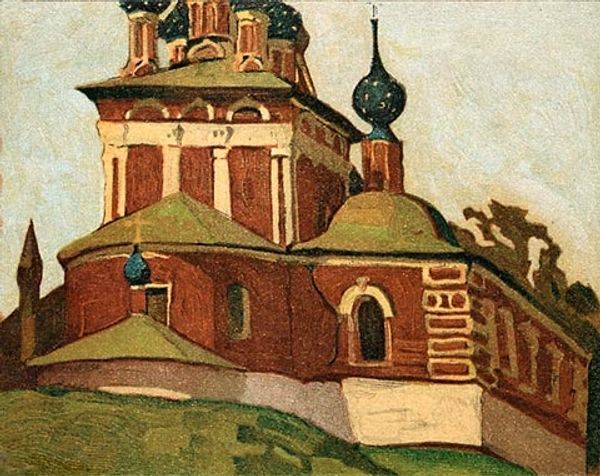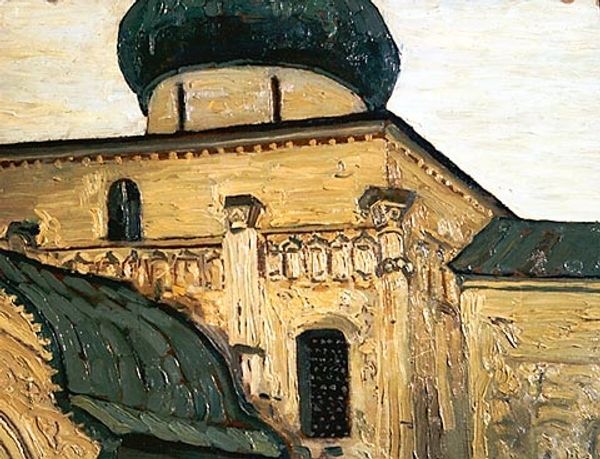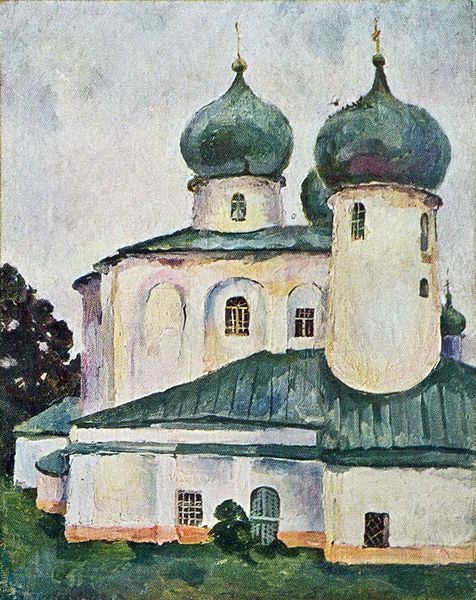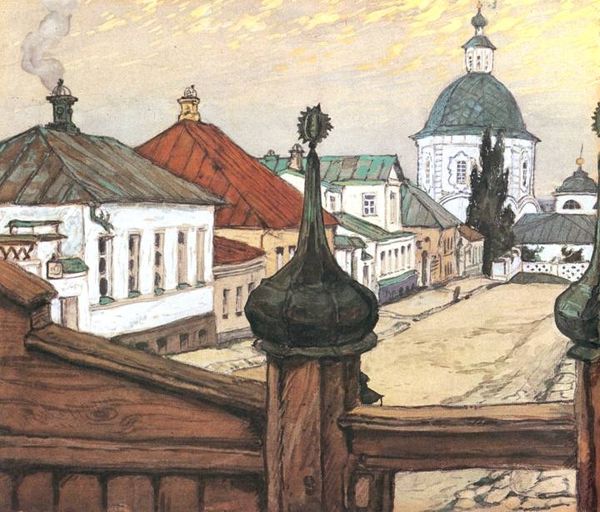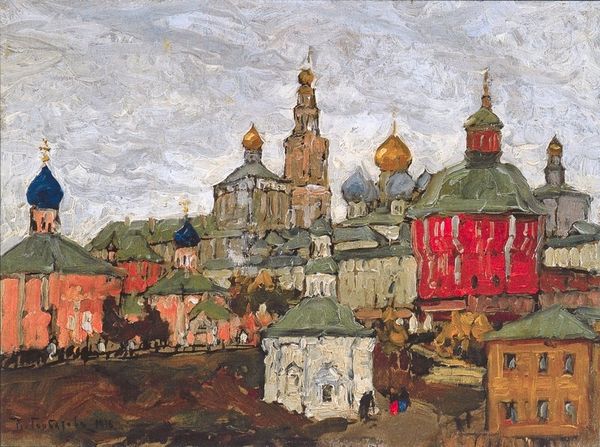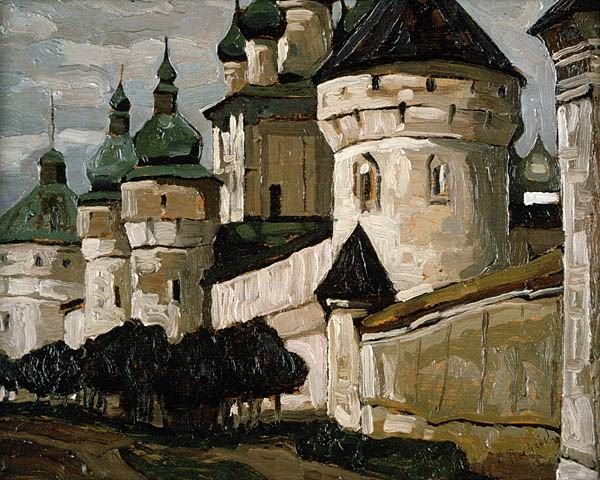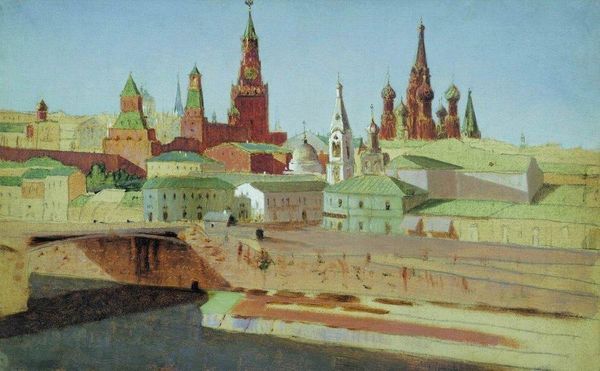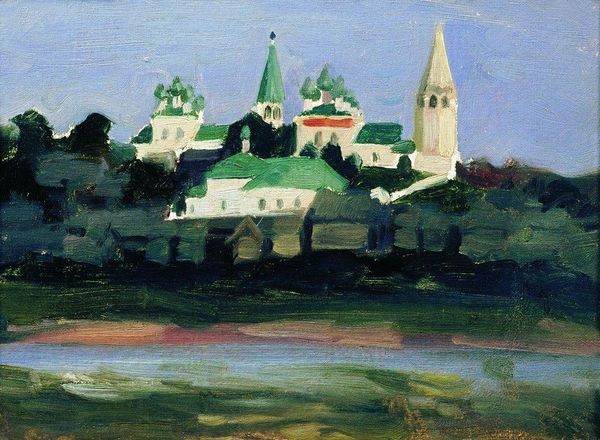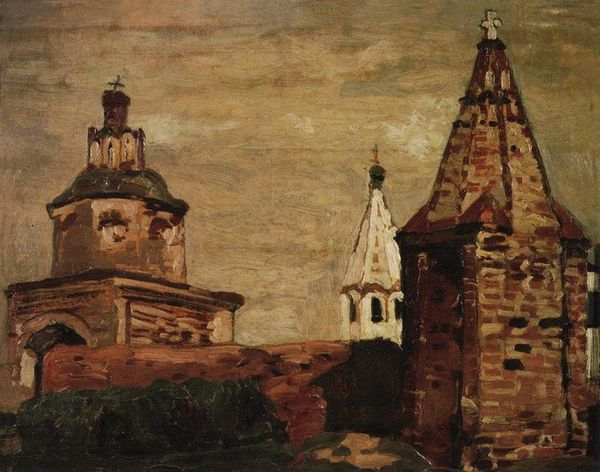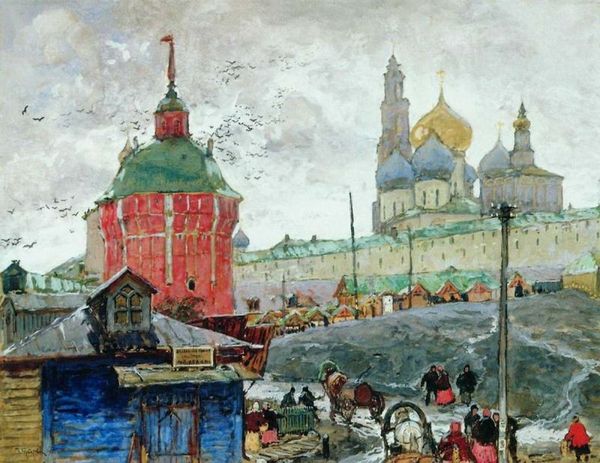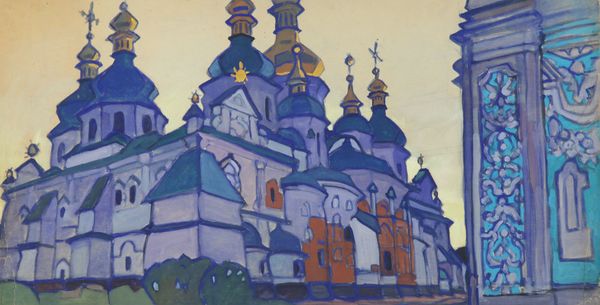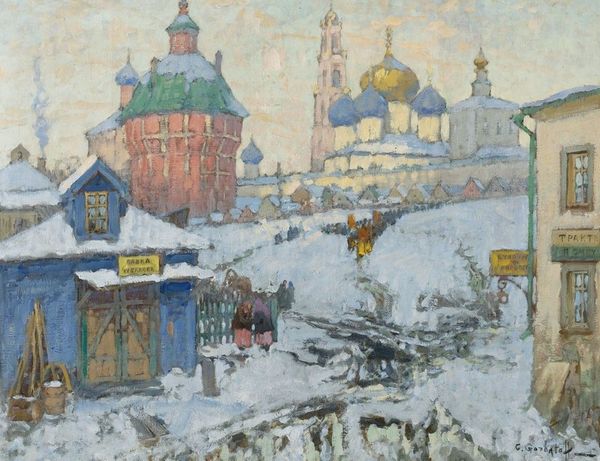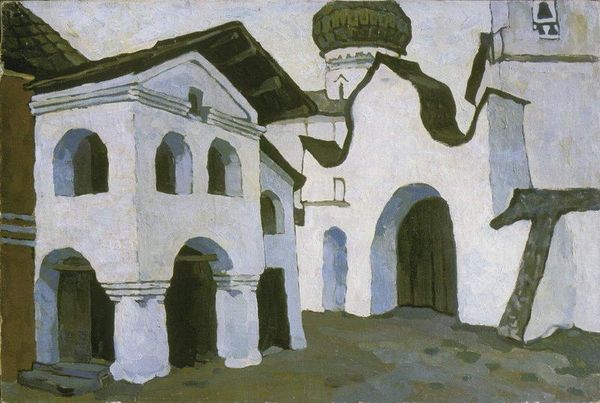
oil-paint
#
cityscape
#
oil-paint
#
oil painting
#
geometric
#
russian-avant-garde
#
cityscape
Copyright: Public domain
Curator: Nicholas Roerich’s 1903 oil painting, "Pechora. General view of the courtyard", gives us a glimpse into the spiritual heartland of early 20th-century Russia. Editor: My initial impression is of layered geometries – rectangular buildings, arching doorways, crowned by these almost whimsical onion domes. There is a sense of contained peace and sturdy construction, almost dreamlike due to the pastel color scheme. Curator: Absolutely. Roerich painted this during a time of great social upheaval. The Russian avant-garde sought new forms of expression, often intertwining art with social and political ideologies. Here, the geometric shapes certainly speak to those formal experimentations. But the courtyard is also a loaded symbol—a space traditionally associated with faith, community, and, sometimes, resistance to external power. Editor: I am drawn to how the colors carry such emotional weight. The greens are suggestive of hope, juxtaposed with the muted blues that evoke melancholy. Do you believe that Roerich intended to represent faith, hope, or tradition with the symbolism behind each building, arch, or dome? Curator: It’s plausible. Religious architecture inherently serves as a beacon and visual shorthand for established systems, often acting as both the center and protector of dominant social values and beliefs. Given Roerich's personal interest in spirituality and the resurgence of nationalism at that time, he may well have been consciously emphasizing the cultural value of these architectural symbols against the backdrop of modernity. The courtyard may be less a simple depiction and more an invocation of old values in an uncertain age. Editor: Interesting. In viewing the shapes alongside colors and time frame, I now see more than architectural geometries and pastels. I see how this image projects the weight of the past in the face of modern life. Curator: Indeed. It also reminds us to look beyond mere aesthetics to consider the complicated and vibrant tapestry of historical forces that shapes the creation and reception of even seemingly straightforward art.
Comments
No comments
Be the first to comment and join the conversation on the ultimate creative platform.
